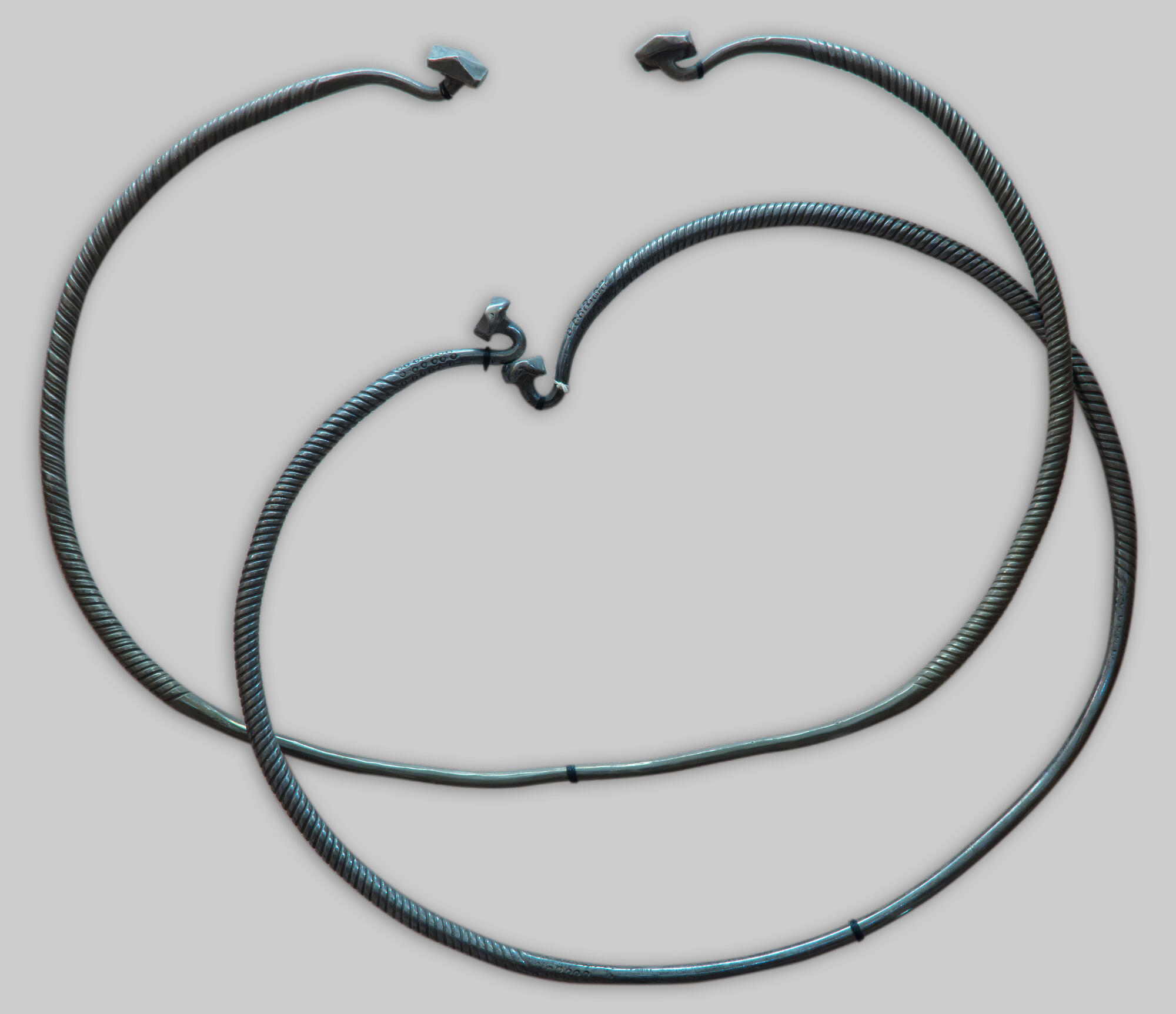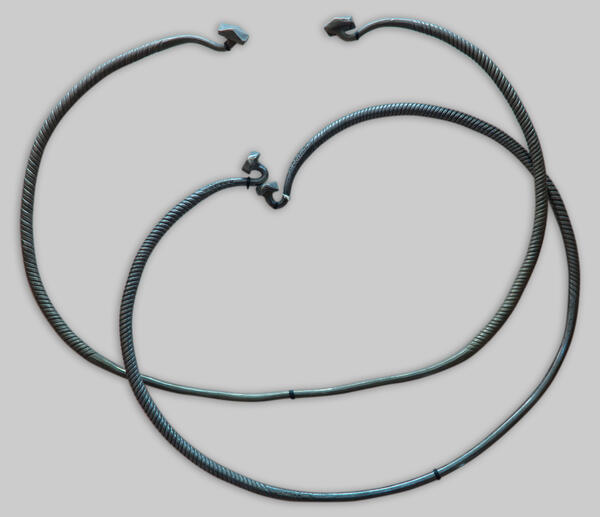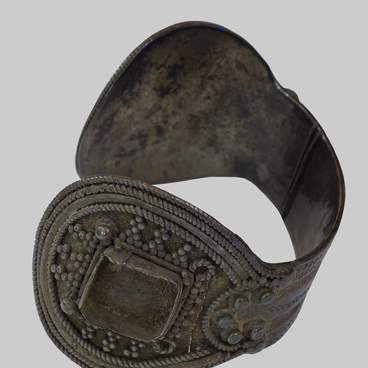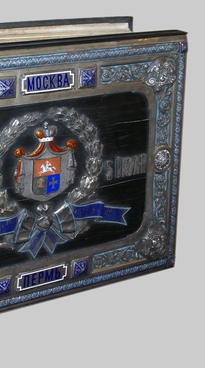The ChUpino treasure trove was submitted to the BereznikI Museum in 1959. It weighed one kilogram one hundred grams and consisted of a silver bracelet, a fragment of a silver bowl made in KhorEzm and two twisted neck torqs.
So-called ‘glazov’ type torq is a pectoral, a distinctive sign of representatives of the nobility. Such a torch is a round dart with a smooth central part and ends with a screw thread. These torqs were presumably made by the masters of the Volga Bulgaria in the 12-13 centuries.
For all the times about 160 ‘glazov’ type torqs were found in the Perm Cis-Urals. (the Redikor treasure trove alone contained 34 torqs). Such decorations were quite widespread in the Urals, Eastern and Northern Europe, and therefore the question of the exact place of their manufacture remains open to this day.
Archaeologists have determined the approximate dating of the treasure — 12-12 centuries. Permyakovskoe and Abramovskoe settlements located in the area of the Chupino village belong to the same period. Apparently, one of the ancient Komi-Perm who lived in these settlements, hid a valuable treasure in a moment of danger.
The peoples of the Cis-Urals and Trans-Urals felt special respect for silver, considering it a sacred, heavenly metal that brought happiness, so they accumulated it in the form of treasures at ancestral and family sanctuaries, decorated their best costumes with silver products. It is no coincidence that in the 12-15 centuries Novgorod robbers-ushkuiniks and Moscow ‘military men’ made campaigns for ‘ZakAmye silver’.
Troves, especially medieval ones, are quite rare. They are usually found by accident when carrying out excavations. Thus, the ChUpino treasure trove of silver items was found by a local resident near the village of ChUpino while constructing the BOrovsk-Perm highway on August 13, 1959.
The archive of the museum preserved the minutes of the meeting of the evaluation commission dated August 19, 1959 on the acquisition of a treasure of silver items from the SoyuzExcavation employee the bulldozer operator Veryakin. The text of the minutes reads: ‘Considering that the treasure is of great historical value, we will take the things for the department of history of the pre-revolutionary past and give 500 rubles for the initiative and preservation of the treasure to Comrade Veryakin.’
So-called ‘glazov’ type torq is a pectoral, a distinctive sign of representatives of the nobility. Such a torch is a round dart with a smooth central part and ends with a screw thread. These torqs were presumably made by the masters of the Volga Bulgaria in the 12-13 centuries.
For all the times about 160 ‘glazov’ type torqs were found in the Perm Cis-Urals. (the Redikor treasure trove alone contained 34 torqs). Such decorations were quite widespread in the Urals, Eastern and Northern Europe, and therefore the question of the exact place of their manufacture remains open to this day.
Archaeologists have determined the approximate dating of the treasure — 12-12 centuries. Permyakovskoe and Abramovskoe settlements located in the area of the Chupino village belong to the same period. Apparently, one of the ancient Komi-Perm who lived in these settlements, hid a valuable treasure in a moment of danger.
The peoples of the Cis-Urals and Trans-Urals felt special respect for silver, considering it a sacred, heavenly metal that brought happiness, so they accumulated it in the form of treasures at ancestral and family sanctuaries, decorated their best costumes with silver products. It is no coincidence that in the 12-15 centuries Novgorod robbers-ushkuiniks and Moscow ‘military men’ made campaigns for ‘ZakAmye silver’.
Troves, especially medieval ones, are quite rare. They are usually found by accident when carrying out excavations. Thus, the ChUpino treasure trove of silver items was found by a local resident near the village of ChUpino while constructing the BOrovsk-Perm highway on August 13, 1959.
The archive of the museum preserved the minutes of the meeting of the evaluation commission dated August 19, 1959 on the acquisition of a treasure of silver items from the SoyuzExcavation employee the bulldozer operator Veryakin. The text of the minutes reads: ‘Considering that the treasure is of great historical value, we will take the things for the department of history of the pre-revolutionary past and give 500 rubles for the initiative and preservation of the treasure to Comrade Veryakin.’



